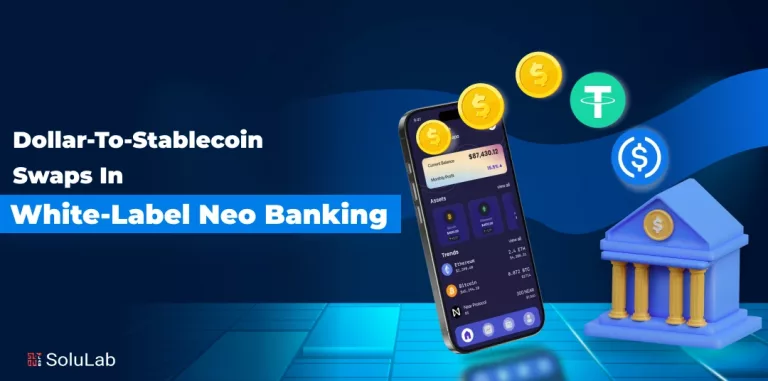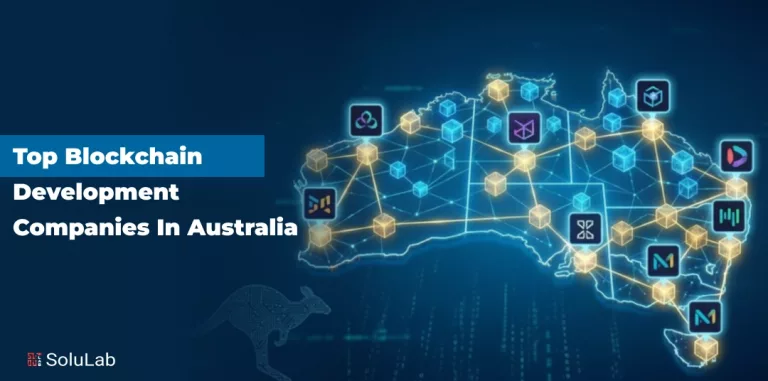Do you want to take advantage of Web3’s potential for your business in 2026? Web3 platforms are transforming business operations by offering enhanced transparency, security, and decentralization as blockchain technology continues to evolve.
The Web3 market is projected to grow from USD 1.04 billion in 2025 to USD 6.06 billion by 2030, representing a 42.3% compound annual growth rate (CAGR). Whether you’re exploring decentralized finance, supply chain transparency, or secure data sharing, these platforms offer tools to elevate your enterprise.
But how can you pick the best platform that fits your business objectives when there are so many possibilities available? This is why in this blog, we’ll walk you through the top 10 Web3 platforms of 2026, each carefully selected for their innovation, scalability, and real-world use cases.
What is a Web3 Platform?
A Web3 platform is a digital space that uses blockchain technology to give users more control, ownership, and privacy online. Unlike Web2 platforms, where data is stored and controlled by centralized web3 companies (like Facebook or Google), Web3 platforms are decentralized. This means your data, identity, and digital assets are often managed through wallets and smart contracts instead of being tied to one company.
Think of platforms like Ethereum or Polkadot—they allow users to interact, trade, or build apps without needing a middleman. In short, Web3 is all about creating a more open, transparent, and user-driven internet experience.
Benefits of Web3 Platforms
Web3 platforms offer a multitude of benefits that extend far beyond the capabilities of their Web2 predecessors. These decentralized networks are revolutionizing the digital landscape. Embracing a Web3 network infrastructure comes with several key benefits that are reshaping the way we interact with technology and the Internet, such as:
- Data Ownership and Control: In Web3 technology, individuals regain control over their data. Unlike the centralized models of Web2, Web3 platforms allow users to own and manage their information, giving them greater autonomy over their digital identities.
- Enhanced Security: The use of blockchain technology in Web3 platforms brings robust security measures. Data on a decentralized ledger is encrypted and distributed across a network, making it more resistant to hacking and unauthorized access.
- Interoperability: Web3 platforms are designed with interoperability in mind. This means that applications and services built on these networks can seamlessly interact with each other, promoting a more connected and efficient digital ecosystem.
- Censorship Resistance: Centralized platforms have the power to censor content and applications. Web3 networks, on the other hand, are more resistant to censorship, as data and applications are distributed across a decentralized network of nodes.
- Transparency: Web3 networks encourage a sense of community among users and developers. This fosters innovation and the creation of applications that cater to diverse needs, from financial services to creative endeavors.
Top 10 Web3 Platforms to Try Out in 2026

1. Ethereum
With its vast developer community and DApp ecosystem, Ethereum has long served as the foundation of the decentralized web. With the full implementation of Ethereum 2.0, it remains the top platform for Web3 development.
Key features include a large number of decentralized nodes in a highly secure network, which facilitates sophisticated programmable applications and is generally interoperable with different protocols and dApps.
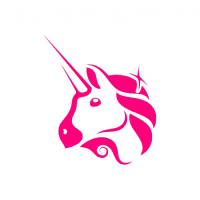
2. Uniswap
Uniswap is one of the most popular decentralized exchanges (DEX) built on the Ethereum blockchain, allowing users to swap cryptocurrencies without the need for intermediaries. It operates using an automated market maker (AMM) model, which means trades are executed from liquidity pools rather than traditional order books.
Key features include permissionless trading, support for a wide range of ERC-20 tokens, and opportunities for users to earn fees by providing liquidity. Ideal for crypto traders, DeFi enthusiasts, and developers looking to integrate token swaps into their dApps, Uniswap remains a go-to platform in the Web3 ecosystem.
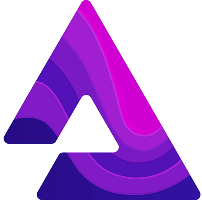
3. Audius
Audius is a decentralized music streaming platform built on Web3 technology for artists to share music directly with fans without intermediaries. It uses blockchain to ensure transparent royalty payments and artist ownership of content.
Key features include free music hosting with high-quality streaming and a built-in token system (AUDIO) that rewards both creators and listeners. Ideal for independent musicians and fans looking for a more artist-friendly alternative to traditional platforms, Audius offers a fair, community-driven experience in the music industry.
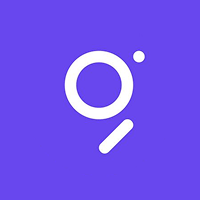
4. The Graph
The Graph is a Web3 indexing protocol that enables developers to efficiently query blockchain data using GraphQL. It plays a crucial role in making blockchain data accessible and usable for decentralized apps (dApps).
The Graph offers subgraphs for custom data indexing and open APIs that anyone can query. It’s ideal for web3 developers building DeFi, NFT, or DAO platforms who need fast, reliable access to on-chain data. With its decentralized network of node operators, The Graph ensures scalability and data integrity across Web3 ecosystems.
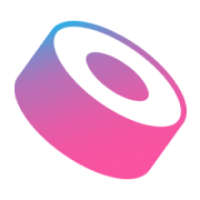
5. Sushiswap
SushiSwap is a decentralized exchange (DEX) built on Ethereum that allows users to swap, earn, and lend crypto assets without relying on a centralized authority. Launched as a community-driven project, it offers features like yield farming, staking, and an on-chain governance model.
SushiSwap also supports cross-chain swaps through its BentoBox and Kashi lending solutions. Ideal for DeFi enthusiasts and crypto traders looking for flexibility and control, SushiSwap combines utility with decentralization, making it a standout platform in the Web3 ecosystem.

6. Aave
Aave is a Web3 decentralized finance (DeFi) platform that allows users to lend and borrow a wide range of cryptocurrencies without intermediaries. Built on the Ethereum blockchain, Aave offers features like flash loans (instant, uncollateralized loans) and interest rate switching (between stable and variable rates).
It also uses a non-custodial protocol, ensuring users maintain full control over their funds. Ideal for crypto investors, developers, and DeFi enthusiasts, Aave is a go-to platform for those looking to explore advanced lending and borrowing mechanics in the Web3 space.

7. Decentraland
Decentraland is a popular Web3 platform that combines virtual reality with blockchain. Users can buy, sell, and build on virtual land using its native token, MANA. Built on the Ethereum blockchain, it offers full ownership of digital real estate and wearables as NFTs.
Decentraland is a decentralized governance model through a DAO and a builder tool for creating immersive experiences. Ideal for creators, gamers, and virtual event organizers looking to monetize digital experiences in a decentralized metaverse.

8. Metamask
MetaMask is one of the most popular Web3 wallets that acts as a bridge between your browser and the decentralized web. It allows users to manage crypto assets, interact with dApps, and securely store private keys all within an easy-to-use browser extension or mobile app.
Key features include support for multiple blockchains like Ethereum and BNB Chain, and a built-in swap feature for exchanging tokens directly. Ideal for crypto beginners, DeFi users, and developers looking to test or deploy dApps with ease.
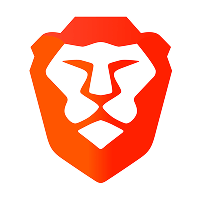
9. Brave Browser
Brave Browser is a privacy-focused Web3 platform that combines fast browsing with blockchain-powered features. Unlike traditional browsers, Brave blocks ads and trackers by default, ensuring a clean and secure user experience.
It also rewards users with Basic Attention Tokens (BAT) for viewing privacy-respecting ads. It has built-in crypto wallets and support for decentralized apps (dApps). Ideal for users who value online privacy, want to earn while browsing, and explore the Web3 ecosystem.
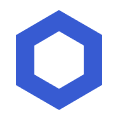
10. Chainlink
Chainlink is a Web3 platform known for its secure and reliable decentralized oracle network that connects smart contracts with real-world data. It ensures data accuracy by aggregating information from multiple sources, making it ideal for DeFi projects, insurance, and supply chain applications.
It offers tamper-proof data feeds, integration with various blockchains, and security protocols. Chainlink’s ability to bridge on-chain and off-chain data makes it a must-try platform for developers looking to build decentralized applications in 2026.
Conclusion
Web3 platforms are becoming essential tools for businesses to innovate and stay ahead. Whether you’re looking to enhance transparency, security, or efficiency, these top 10 Web3 platforms offer solutions for your business.
From Ethereum to smart contracts or Aave, each platform brings unique strengths that can change how businesses operate. The key is choosing the right one that aligns with your business goals and tech stack.
SoluLab, a renowned web3 development company in the USA, can help you choose the right web3 platform and give you expert guidance to implement it in your business.

FAQs
1. What is Web3 technology, and how is it different from Web2?
Web3 represents a paradigm shift towards a more decentralized internet where data ownership and control are in the hands of users. Unlike Web2, which relies on centralized platforms, Web3 leverages blockchain technology to create trustless, user-centric applications and services.
2. Why are Web3 platforms significant in 2026?
Web3 platforms are significant because they address critical issues like data privacy, security, and censorship resistance. They empower users, foster innovation, and offer a more transparent and equitable digital environment.
3. What are the challenges faced while using Web3 platforms?
The complexity in understanding ads using Web3 platforms includes scalability issues, Reve concerns due to blockchain, transparency, and difficulty while setting up wallets and managing private keys. In addition to this, interoperability issues between blockchains make it hard for everyday users to fully adopt Web3.
4. What are some examples of Web3 applications?
Web3 applications, also known as DApps, cover a wide range of use cases. Some examples include DeFi platforms for lending and borrowing, non-fungible token (NFT) marketplaces for digital collectibles, blockchain-based identity verification systems, and social networks that give users control over their data.
5. How does SoluLab’s expertise benefit my Web3 project?
SoluLab brings a wealth of experience in Web3 development to the table. Our team of skilled developers and blockchain experts can help you design, develop, and launch your Web3 project efficiently and securely. Whether it’s building decentralized applications, integrating blockchain solutions, or providing guidance on Web3 best practices, SoluLab’s expertise ensures your project’s success in the rapidly evolving Web3 landscape.


